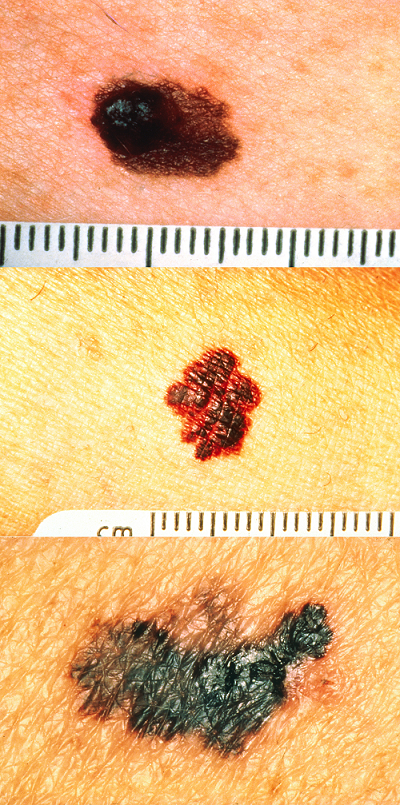Vitamin D Comes From the Skin (not the sun)
The epidermal layer of human skin synthesizes vitamin D when exposed to UV radiation. In the presence of sunlight, a form of vitamin D3 called cholecalciferol is synthesized from cholesterol in the skin. Vitamin D is essential for normal absorption of calcium and phosphorous, which are required for healthy bones among other needs. The absence of sun exposure can lead to a lack of vitamin D in the body, leading to a condition called rickets, a painful condition in children where the bones are misshapen due to a lack of calcium, causing bow-leggedness. Elderly individuals who suffer from vitamin D deficiency can develop a condition called osteomalacia, a softening of the bones. In present day society, vitamin D is added as a supplement to many foods, including milk and orange juice, compensating for the need for sun exposure.
In addition to its essential role in bone health, vitamin D is essential for general immunity against bacterial, viral, and fungal infections. Recent studies are also finding a link between insufficient vitamin D and cancer.
Overexposure to UV radiation damages DNA, which can lead to the formation of cancerous skin lesions. Although melanin offers some protection against DNA damage from the sun, often it is not enough. Basal cell carcinoma is a form of cancer that affects the mitotically active stem cells in the stratum basale of the epidermis. It is the most common of all cancers that occur in the United States and is frequently found on the head, neck, arms, and back, which are areas that are most susceptible to long-term sun exposure. The appearance of this cancer will vary depending on the individual and the form of cancer. The lesion can turn hands from a shiny pearl like area to a red eczema like area. Squamous cell carcinoma is a cancer that affects the keratinocytes of the stratum spinosum and presents as lesions commonly found on the scalp, ears, and hands. These lesions also vary in appearance but tend to be scaly, crusty, wart like, and possibly bleeding. It is the second most common skin cancer. A melanoma is a cancer characterized by the uncontrolled growth of melanocytes, the pigment-producing cells in the epidermis. Typically, a melanoma develops from a mole. It is the most fatal of all skin cancers, as it is highly metastatic and can be difficult to detect before it has spread to other organs. To identify a melanoma lesion the ABCDEs are used - any of these conditions present in a mole can indicate melanoma.
A = Asymmetry, if you draw a line through the center of the mole and the 2 sides do not match that means the mole is asymmetrical and is unlike a benign mole.
B = Border, instead of a typical rounded border you see scalloped edges and it is uneven the mole may be cancerous.
C = Color, if the mole is not uniform or homogeneous in color it may be cancerous.
D = Diameter, if the diameter of the mole is greater than 6mm it may be cancerous.
E = Evolving, or changing over time, may indicate a cancerous mole.

Figure 2. Melanoma; Note the changes in all ABCDEs described above. You can see they are asymmetrical, they uneven color and the uneven borders of the moles. You can see the width is larger than 6mm.
Image modified from a larger version by the Skin Cancer Foundation.
CCBY: OpenStax